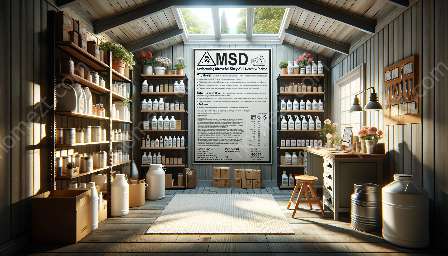When it comes to the safe storage of hazardous materials at home, understanding the hazard communication standard is crucial for ensuring home safety and security. This comprehensive guide aims to provide detailed explanations and practical tips for homeowners to effectively store hazardous materials in their homes.
Understanding the Hazard Communication Standard
The hazard communication standard, also known as HazCom, was developed by the Occupational Safety and Health Administration (OSHA) to ensure that the hazards of all chemicals produced or imported are evaluated and that information concerning their hazards is transmitted to employers and employees. While this standard primarily focuses on workplace safety, its principles can also be applied to home environments, especially when it comes to storing hazardous materials.
When dealing with hazardous materials at home, it’s important to familiarize yourself with the key elements of the hazard communication standard, including:
- The use of safety data sheets (SDS) to provide comprehensive information about the hazards of a particular substance, safe handling procedures, and protective measures.
- The labeling of containers to clearly identify the hazardous materials and communicate relevant safety information.
- Employee training to ensure that individuals understand the potential hazards associated with the materials they are using or storing.
Safe Storage of Hazardous Materials at Home
Proper storage of hazardous materials in a home environment is essential to prevent accidents, protect the environment, and ensure the safety of residents. Here are key considerations for safe storage:
- Identify Hazardous Materials: Begin by identifying the hazardous materials present in your home. This can include items such as cleaning supplies, pesticides, and flammable liquids.
- Segregation and Separation: Store different types of hazardous materials separately to prevent potential reactions or contamination. For example, corrosive substances should be kept away from flammable ones.
- Proper Containers: Use appropriate, labeled containers designed for storing hazardous materials. These containers should be durable, leak-proof, and capable of containing the material in the event of a spill.
- Secure Storage Area: Designate a well-ventilated, cool, and dry storage area for hazardous materials. Ensure that this area is securely locked and inaccessible to children or pets.
- Emergency Preparedness: Have spill control and personal protective equipment readily available in case of accidental spills or exposure to hazardous materials.
Home Safety and Security
Integrating the hazard communication standard into the safe storage of hazardous materials at home contributes to overall home safety and security. By following these guidelines, individuals can reduce the risk of accidents, protect their families and the environment, and ensure compliance with safety regulations.
Conclusion
Understanding and implementing the hazard communication standard for the safe storage of hazardous materials at home is paramount for maintaining a secure and healthy living environment. By adhering to safe storage practices and integrating the principles of the hazard communication standard, homeowners can effectively manage hazardous materials while prioritizing home safety and security.



